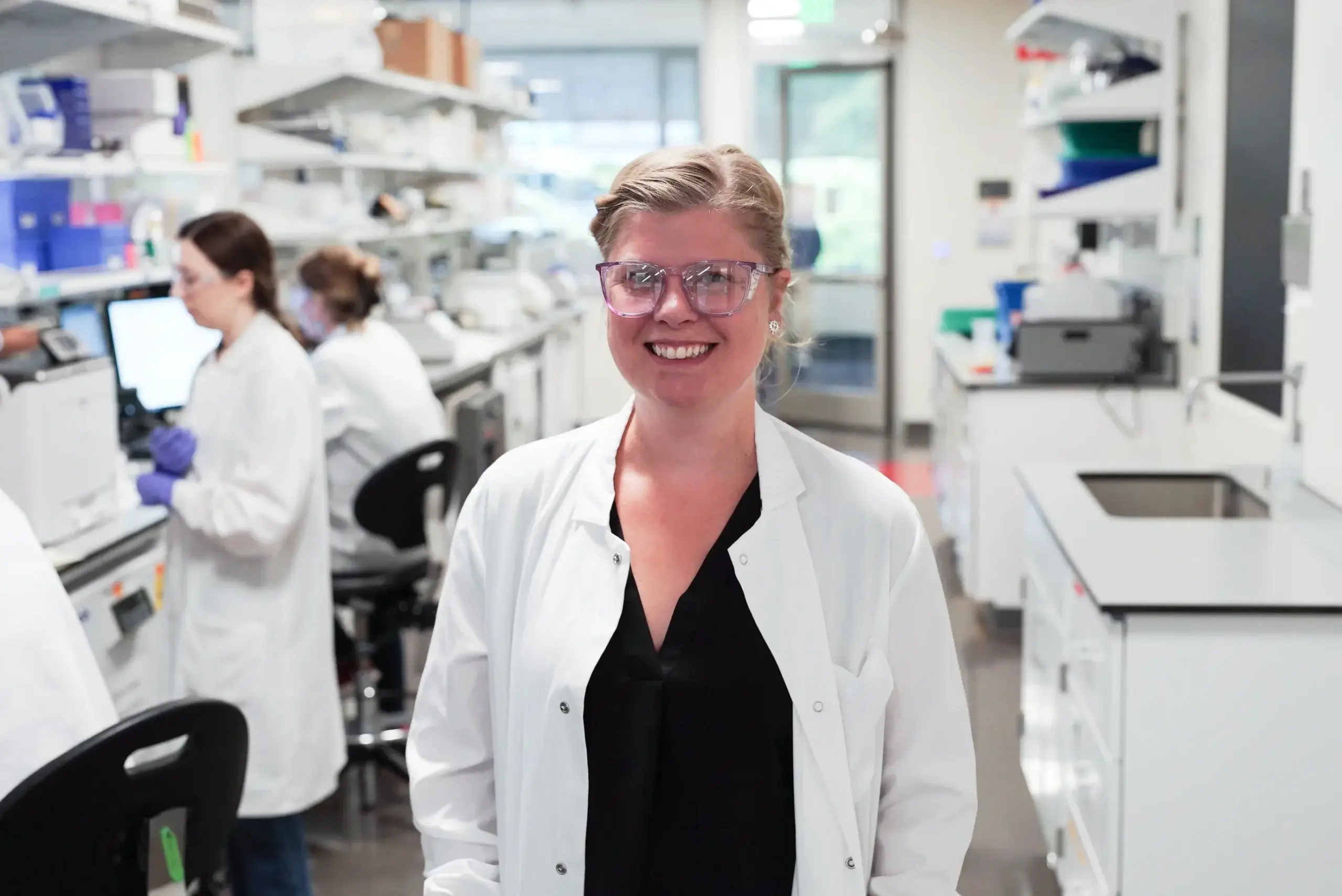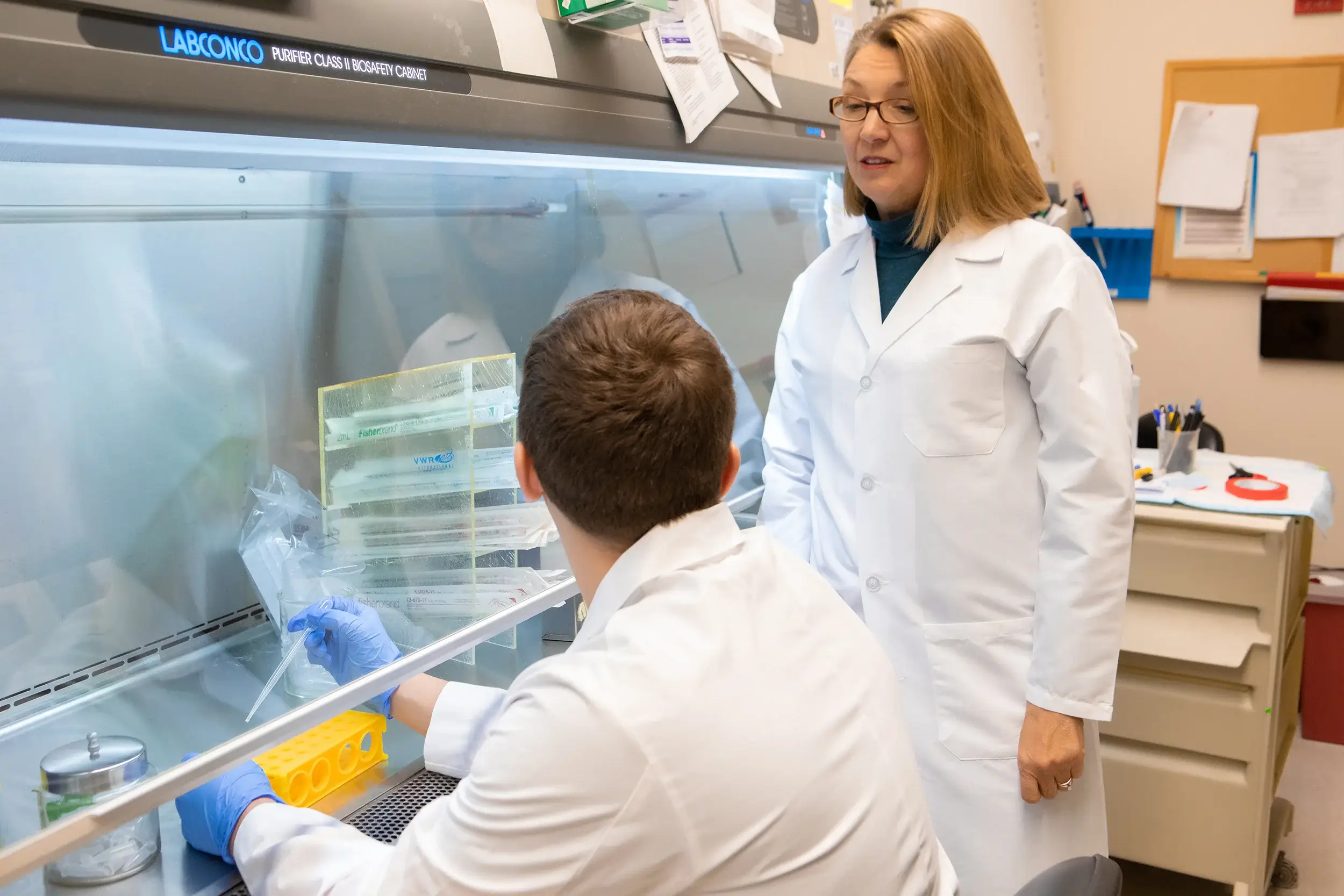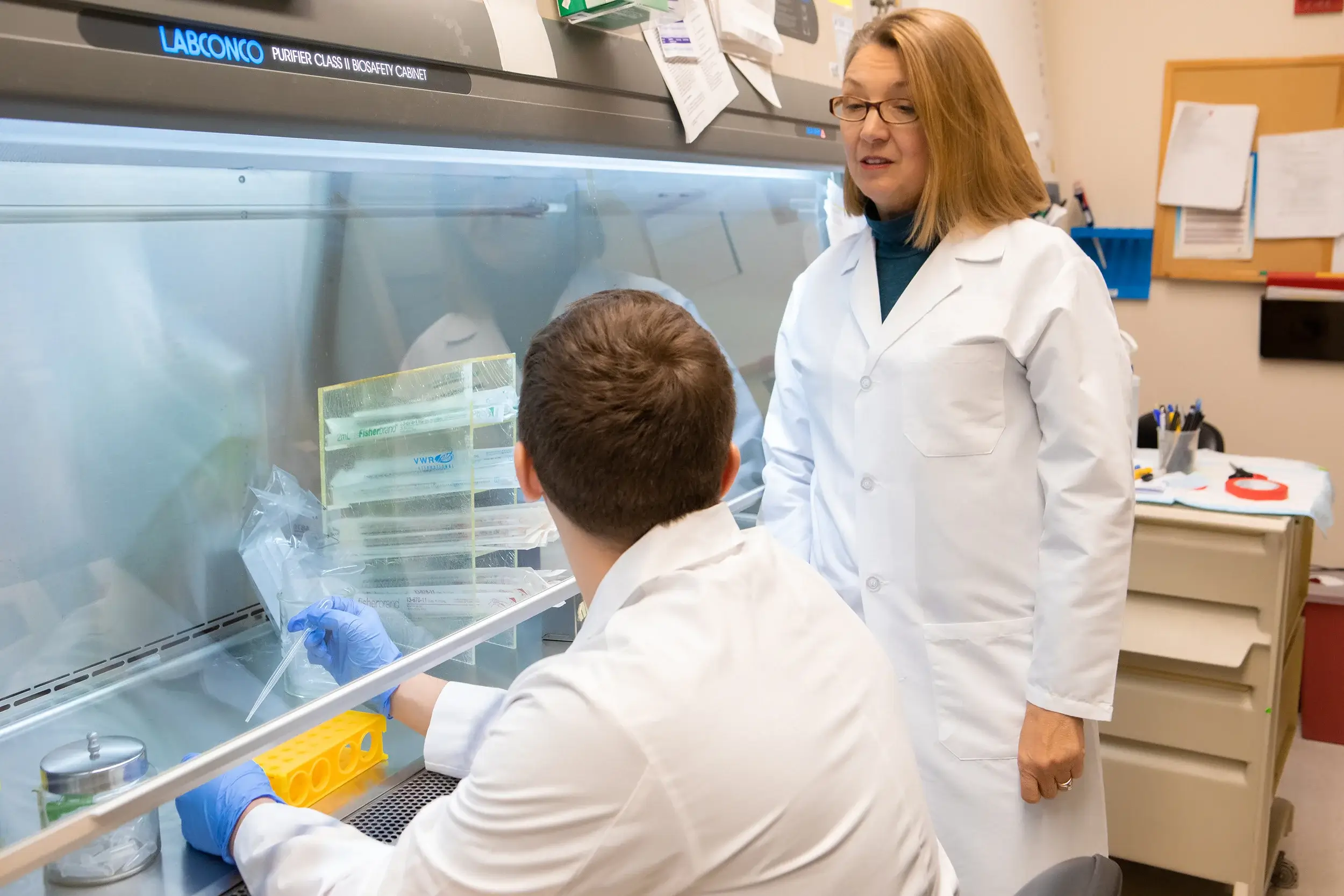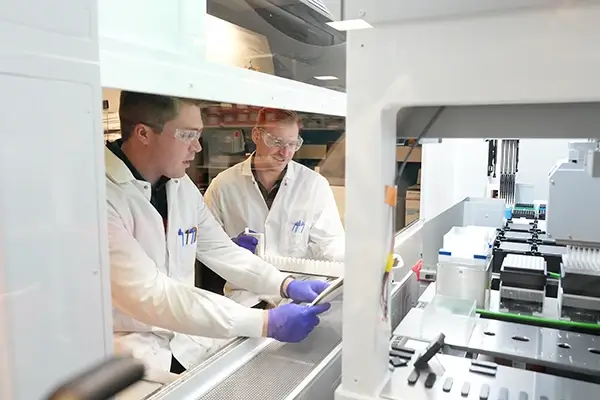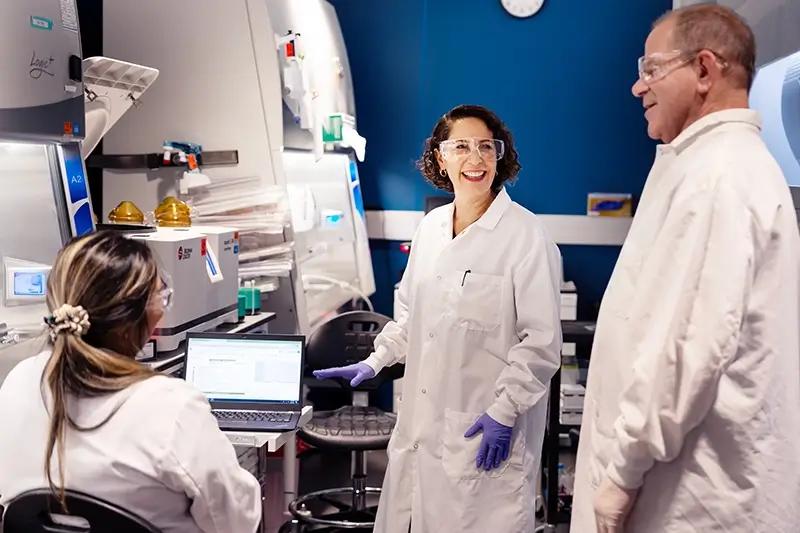
Meet Heidi Gustafson, an artist who finds beauty in the earth’s pigments.
She transforms rocks and minerals into vibrant colors that tell stories of the land. From deep reds to chalky grays and powdery blues, Heidi forages her palette from riverbeds, eroding bluffs, and forests around the world. With each crushed stone, she reveals and isolates nature’s hidden hues.
Meet Heidi Gustafson, an artist who finds beauty in the earth’s pigments.
Now meet Claire Gustafson, Ph.D., a scientist working to unravel the mysteries of the immune system.
At the Allen Institute for Immunology, Claire studies how our body’s defenses change as we age.
That research helps explain why children and adults respond differently to illnesses and vaccines–a crucial step toward keeping people healthier throughout their lives.
That research helps explain why children and adults respond differently to illnesses and vaccines–a crucial step toward keeping people healthier throughout their lives.
Now meet Claire Gustafson, Ph.D., a scientist working to unravel the mysteries of the immune system.
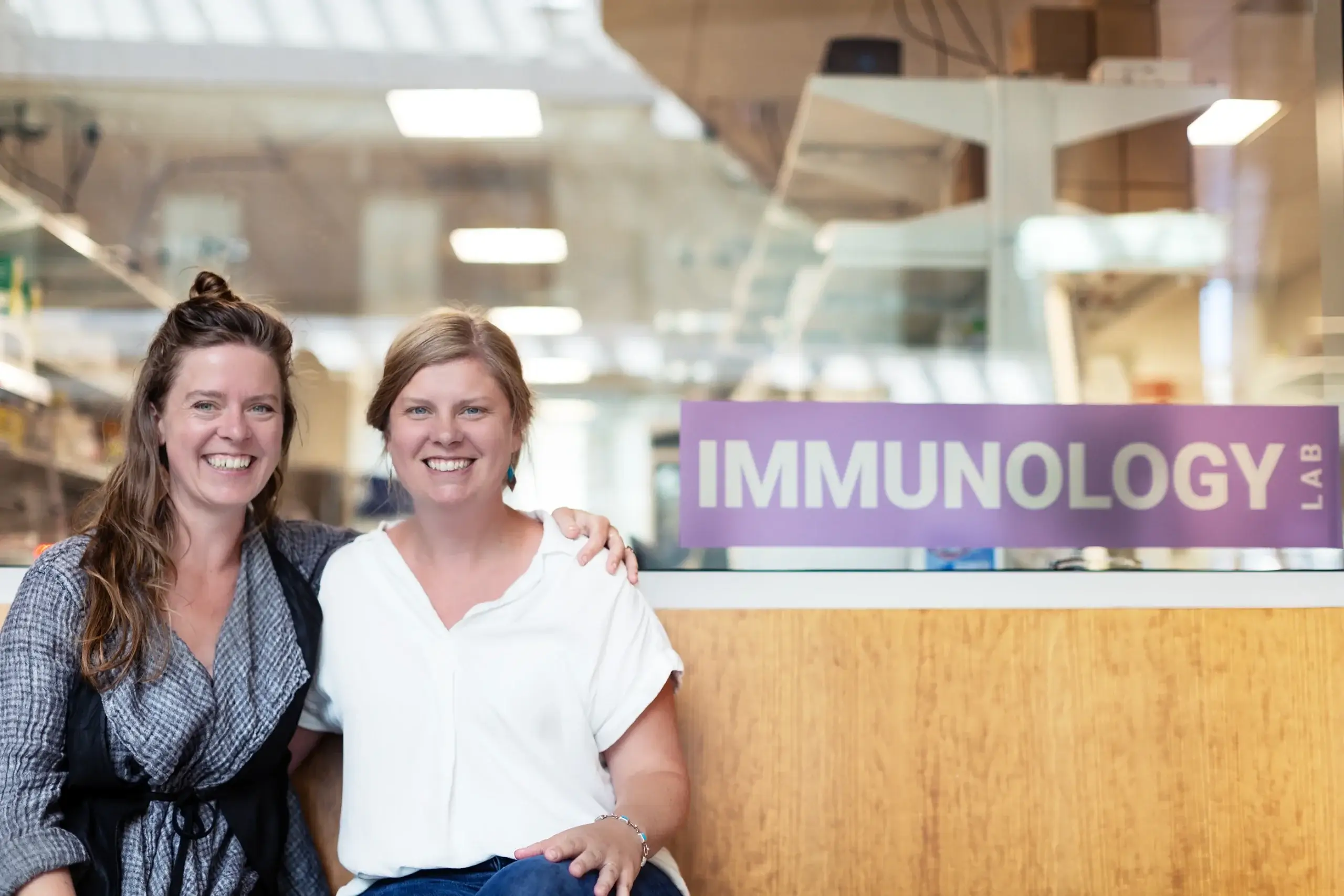

These sisters, from seemingly different worlds, have joined forces in a unique collaboration to visualize the healthy aging immune system.
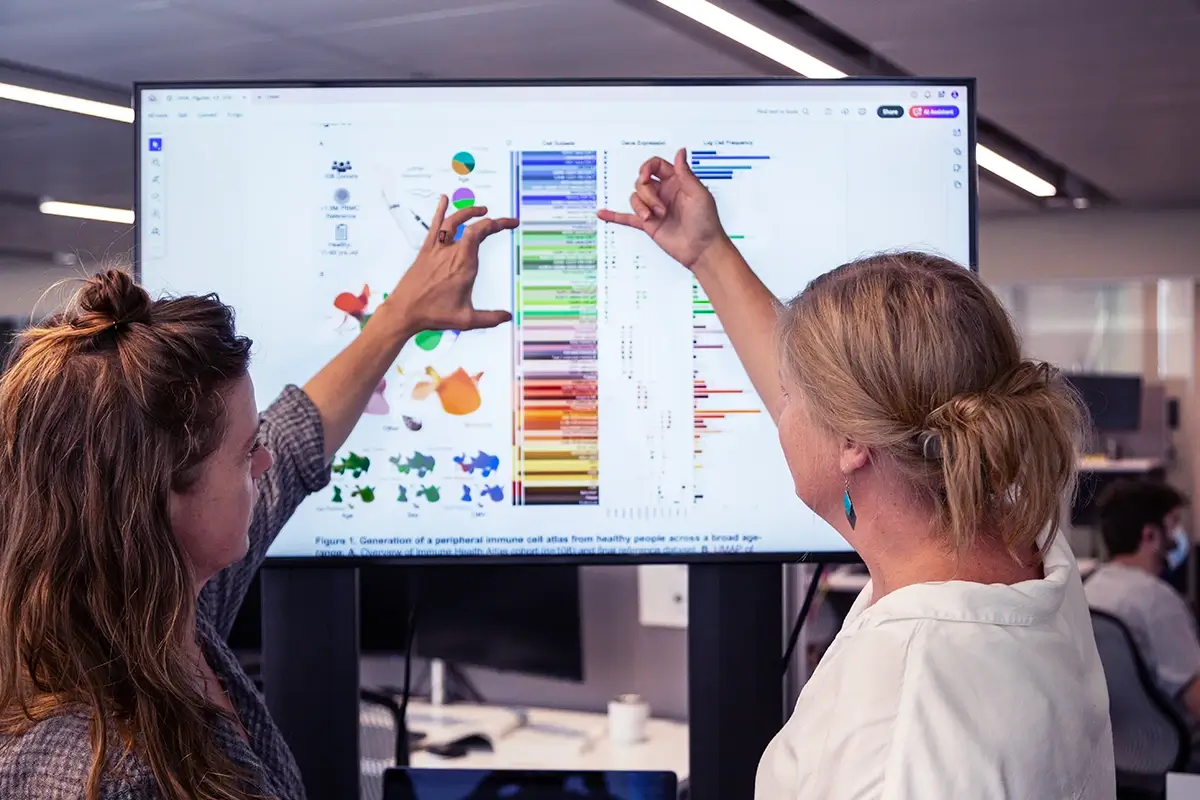
Heidi sees scientific figures, developed by Claire’s team, for the first time.
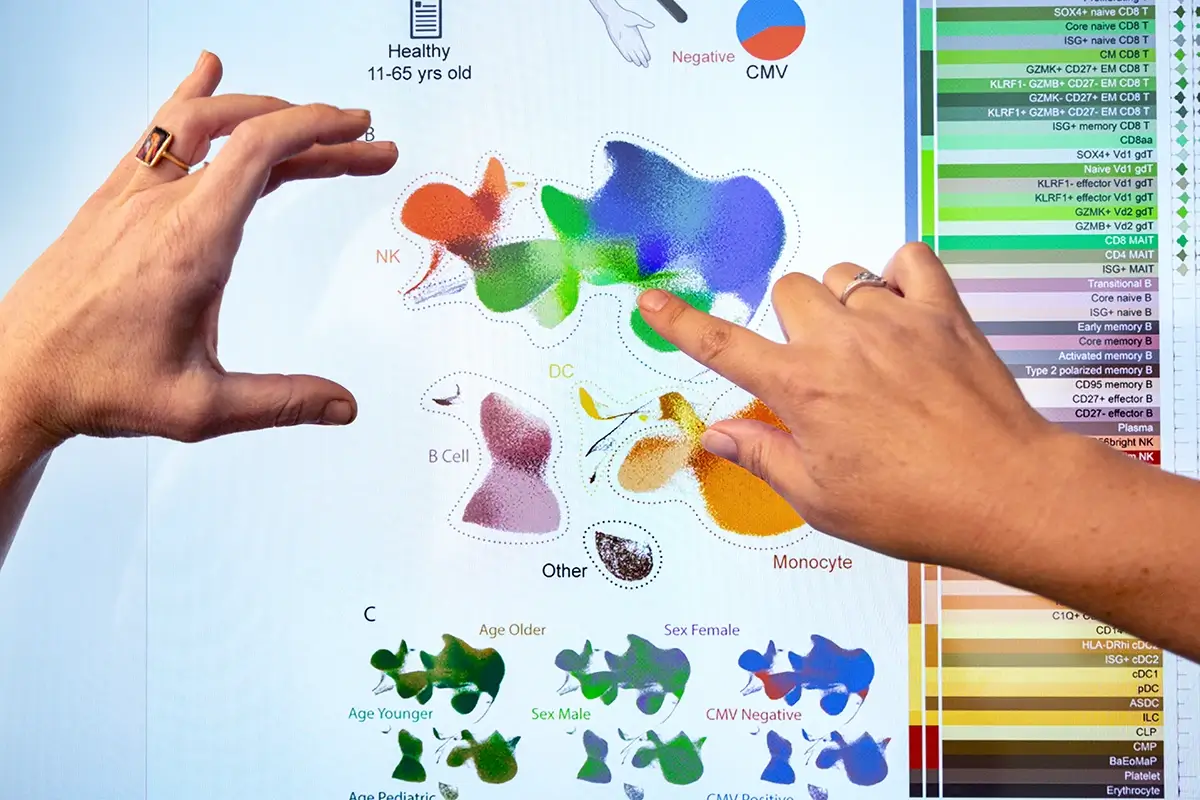
Each color represents a different cell type in the human immune system.

This UMAP visualizes clusters of cell types from a massive single-cell dataset.
Claire and her team analyzed 1.8 million cells from healthy adult and children donors over two years. That massive effort resulted in the Allen Institute for Immunology Immune Health Atlas – an unprecedented reference map of the cells that make up our immune system.
Now, they’re using this atlas to uncover new insights into how our immune systems evolve with age, respond to chronic infections, and react to vaccinations.
Scientist at the Allen Institute working with the TECAN.
A vivid portrait of your immune system
The Immune Health Atlas, the largest of its kind, is freely available to researchers worldwide.
At its core, the Atlas addresses a fundamental question: What does a healthy immune system look like? Understanding the full spectrum of immune health is crucial for identifying the tipping points that lead to immune-related diseases like asthma, rheumatoid arthritis, and diabetes.
But immune systems are as unique as fingerprints. To capture this diversity, the team collaborated with Benaroya Research Institute (BRI) and the University of Pennsylvania to collect blood samples from more than 100 healthy volunteers, spanning three age groups: 11-13, 25-35, and 55-65. Allen Institute scientists then used advanced tools to analyze millions of individual cells.
Faced with this vast dataset, Claire sought an innovative way to visualize it. So she turned to her sister.
At its core, the Atlas addresses a fundamental question: What does a healthy immune system look like? Understanding the full spectrum of immune health is crucial for identifying the tipping points that lead to immune-related diseases like asthma, rheumatoid arthritis, and diabetes.
But immune systems are as unique as fingerprints. To capture this diversity, the team collaborated with Benaroya Research Institute (BRI) and the University of Pennsylvania to collect blood samples from more than 100 healthy volunteers, spanning three age groups: 11-13, 25-35, and 55-65. Allen Institute scientists then used advanced tools to analyze millions of individual cells.
Faced with this vast dataset, Claire sought an innovative way to visualize it. So she turned to her sister.
Explore your immune cells
This UMAP data visualization shows cells grouped and color-coded according to their cell type.
Click on the animated circle to learn more about each cell.

T Cells
These cells are key players in your immune system. They help identify and destroy infected or cancerous cells and also release signals to support other immune cells in their jobs.
Natural Killer (NK) Cells
These cells travel through the bloodstream and tissues, detecting and destroying abnormal cells like tumors or cells infected by viruses, without first needing to recognize a specific pathogen.
B Cells
These cells produce antibodies, which are proteins that specifically target and neutralize foreign invaders like bacteria and viruses.
Monocytes
These are the largest type of white blood cell and circulate in the blood. They can transform into macrophages, the “garbage eaters” that engulf and digest pathogens and dead cells.
Dendritic Cells
These cells act as messengers in the immune system. They capture bits of pathogens and present them to T cells to trigger an immune response.
Meet a Vanishing T cell
Discover how aging impacts vaccine response


“Building the Immune Health Atlas was truly a labor of love for our team. This comprehensive single cell resource will be invaluable for the field of immunology, helping us better understand how the immune system evolves with age and advancing research into immune-related diseases.”
Ananda Goldrath
Executive Vice President, Director of Allen Institute for Immunology

“It brings joy to me to see how we can make science communication beautiful and accessible.”
Listen to Heidi and Claire discuss their collaboration.
Through the eyes of sisters, science becomes art, and art illuminates science.
Special thanks to Claire Gustafson, Ph.D. & Heidi Gustafson for sharing their story and their time.
Scientific Collaborators
Allen Institute for Immunology
Benaroya Research Institute
University of Pennsylvania
Produced By
Jenny Burns
Brian Cama
Jake Siegel
Steven Hurd
Erik Dinnel
Mei Chi Chin
Peter Kim
Feedback and story input by:
Zach Thomson
Lucas T. Graybuck, Ph.D
Mackenzie Kopp

